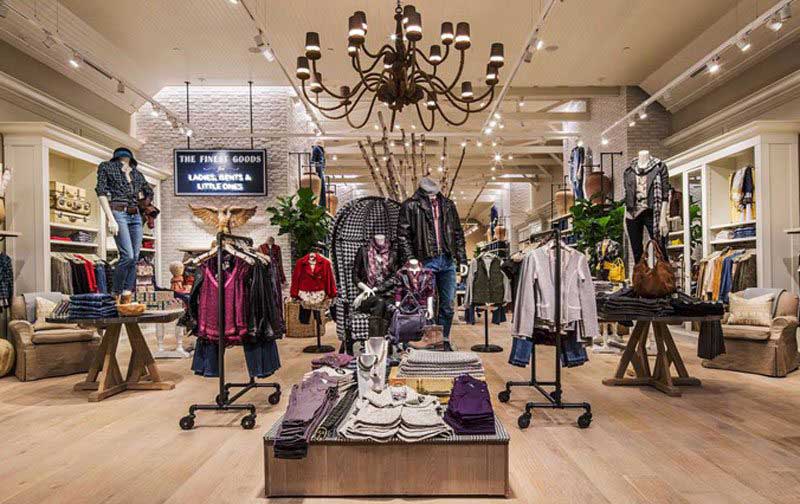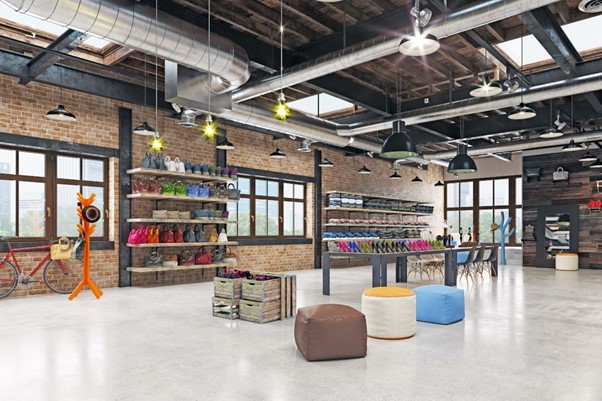Showrooms help communicate brand identity in a competitive market. They are the halfway point between a business and its customers, the face of core values, and the soul of a brand. Design that inspires—Showrooms impress with the experience they convey to visitors. Knowing how these spaces do this is the crux of writing a story for the entire brand.
The Power of Visual Elements
The visuals are the most crucial part of a showroom design. Color, texture, and lighting play an enormous role in setting the mood and can evoke certain feelings.
A practical example would be warm colors creating an inviting atmosphere and sharp modern lines signifying sophistication. Everything is intentionally chosen, and each aspect harmonizes with the brand image.
Using the brand colors in a showroom space like CeTerra Accents & Interiors is an effective way of building brand recognition. Having these colors used consistently across different touchpoints builds the same impression.
Lighting is also a key element. It can accentuate key products or features, create a dramatic atmosphere, and pull the human eye towards particular features or areas in a space. Visuals like these strengthen your branding and make it easier for the visitors to relate to the brand story.
Layout and Flow

Customers interact in a showroom, and its layout plays a pivotal role. An open, welcoming space welcomes exploration, and a planned approach to product placement can help facilitate your customer journey through this space. By controlling this flow, they ensure visitors experience what the brand has to offer, integrally complementing and enriching their experience.
Designing pathways that guide customers through a narrative journey effectively strengthens brand stories. The showroom’s different sections can showcase the brand’s different elements, giving visitors a complete experience of it.
Doing this communicates brand values and creates an impression in the customer’s mind that makes him want to revisit. Showrooms can create an intimate experience by playing with how curated the journey is, making it feel organic.
Interactive Experiences
Now, in the showroom, engagement is everything. Interactive features engage visitors and leave a lasting impression. Touchscreens, a VR setup, and product demonstrations engage customers. These interactive elements help to build a connection, allowing visitors to experience the brand firsthand.
You are turning showrooms into more than a product display area by enabling your visitors and potential clients to interact. Creating weaves together with brand stories, and they become living proof of it.
Being able to connect with customers at a personal level creates loyalty among them, as the participants feel they are part of the voyage that the brand is undergoing. These interactive experiences also allow visitors to learn more about the brand’s history, values, and aims for the future.
Incorporating Technology
Showroom design has evolved because of technology. Adopting advanced solutions improves the customer journey and offers greater engagement with the brand. Mediated interactions, such as digital displays, augmented reality, and virtual tours, appeal to more technologically minded visitors.
We are all drawn towards these new and innovative technologies and receive tons of data as well. Interactive formats also help brands discover customer preferences and customize offerings to keep them relevant and happy.
They also build a connection between the brand and the consumers as they feel they belong. When adopting technology, showrooms will always be a step ahead of innovation and close to most consumers.
Sustainability and Authenticity
Sustainability and authenticity are both things that modern consumers have started to care more about. Showrooms featuring sustainable materials and practices speak to a commitment to the same. This is inherently aligned with consumer values, translating into positive brand perceptions.
Authentic design stems from what the brand in question stands for. Get as local as possible with your materials or craftsmanship to showcase your commitment to integrity and quality.
These things together provide a real experience that enables customers to meet the brand personally. In this way, dealerships can attract consumers whose loyalty will rely on sustainability and the wish to buy ethical products.
Conclusion
Showroom design is an essential part of communicating brand identity; to conclude, Showrooms do this by meticulously curating visual elements, arranging layouts, designing an experience, and integrating technology into the touchpoints to immerse customers into their environment.
By communicating these values of sustainability and authenticity, brands can create lifelong bonds and ensure that their identity is recognized and experienced. A showroom that successfully conveys a brand identity connects with visitors emotionally and offers them a physical reflection of the true nature of a brand.

